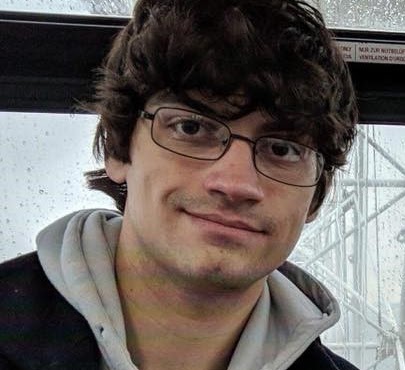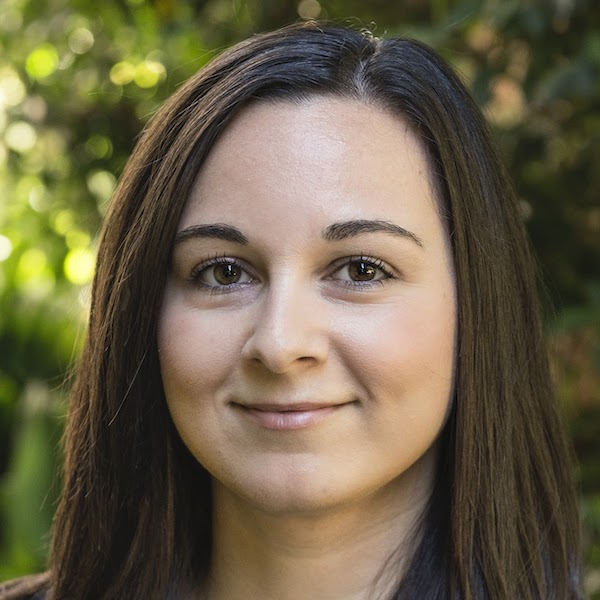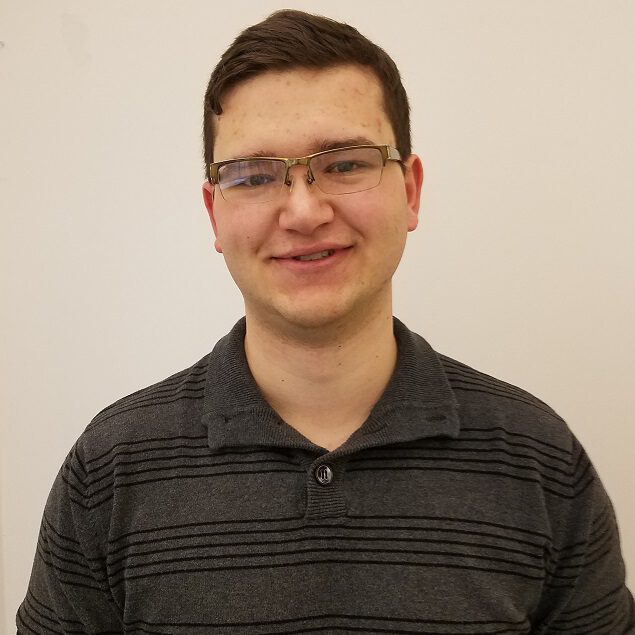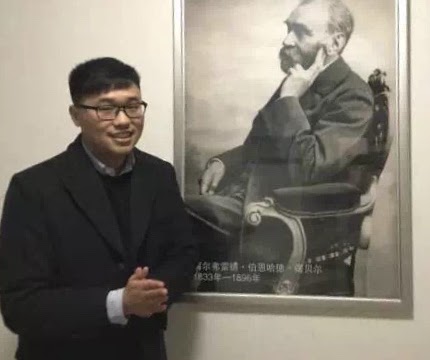John Cenker
Two-dimensional van der Waals crystals hold great promise for future devices due to their atomically thin nature and the consequent unique emergent physics. Furthermore, their pristine crystal lattices should make them extraordinarily robust to external stresses such as strain. My research focuses on developing new ways to apply strain to 2D materials to drive phase transitions which can be harnessed for future device applications. For example, applying strain to atomically thin magnets to drive magnetic phase transitions. This research could enable energy-efficient, ultrathin memory bits which can be written purely by an applied voltage to the strain cell. Advisor: Xiaodong Xu - Physics...
Matthew Golder
Research in the Golder lab is centered around the creation of cutting-edge organic materials. We are interested in new synthetic methodologies that enable the design of large macrocycles with potential utility in organic electronics and gas transport. We ultimately design catalysts and then study their application in the development of conjugated cyclic polymers and other novel porous polymeric materials....
Eleftheria Roumeli
Assistant Professor, Materials Science & Engineering The Roumeli group creates sustainable polymer nanocomposite materials from renewable resources, and specifically from plant and algae cells. We develop processing methods to transform the biomass to new biodegradable and multifunctional nanocomposites and study their structure-property relationships. Future applications for these materials and structures include critical material capturing and packaging. Email | Website | LinkedIn ...
Christian Pederson
Simulating novel materials with the desired range of properties for efficient solar energy collection, or storage is computationally intractable with classical computers. Quantum computers and simulators are the only known devices that can efficiently tackle these problems, yet are plagued by the experimental challenges of scaling up sensitive quantum systems. I will investigate an integrated photonics platform based on point defects in diamond. Significant challenges remain, but integrated devices have a clear path to scalability since they build upon existing semiconductor fabrication methods. Recent work demonstrated that a particular defect, the silicon-vacancy(SiV) center, could be created nanometers from the surface of diamond without compromising its...
David S. Bergsman
Assistant Professor, Chemical Engineering The Bergsman group tackles emerging challenges in water, energy, and sustainability using nanomaterials. Through the design of ultrathin nanostructures and coatings, we create membranes that can separate contaminants from water, catalysts that drive difficult chemical reactions, and materials enable the formation of previously unobtainable device architectures. We combine atomically-precise synthesis, advanced characterization approaches, and data science tools to better understand the behavior of molecules in these uniquely small systems and use that understanding to invent processes that can enable the use of clean energy technologies at scale. Email | Website | LinkedIn Recent Publications David S. Bergsman, Bezawit A. Getachew, Christ B. Cooper, Jeffrey...
Jiaying Yang
Electrocatalytic conversion of CO2 into useful chemical resources is a compelling strategy to mitigate the effects of climate change, but accomplishing this goal requires the development of next-generation catalysts. Highly selective homogeneous catalysts suffer from low stability, while robust heterogeneous catalyst cannot be easily tuned for selectivity. Immobilization of molecular catalysts on heterogeneous supports provides more robust catalytic systems with high selectivity and activity. Through my research, I will investigate the surface functionalization of phosphorene, a two-dimensional phosphorous analogue of graphene with a thickness dependent bandgap. The support was chosen because it can be viewed as a solid-state phosphine ligand poised to coordinate to transition metal...
Lixin Lu
Doped metal-halide perovskites CsPbX3 (X=Cl, Br or I) nanocrystals (NCs), which combine the desirable broadband absorptive properties of perovskite semiconductors with the richly tunable color emission profiles of sensitized metal ion dopants, have a great potential in the application of high-efficiency solar cells, LEDs, and lasers. Successful doping of various trivalent lanthanide ions (or rare earth ions, RE) into colloidal perovskite NCs has been recently reported. For example, ytterbium (Yb3+)-doped CsPbX3 exhibits over 100% photoluminescence quantum yields (PLQY) as a result of picosecond quantum cutting process, indicating its opportunities to serve as downconverters in solar-energy-conversion technologies. Despite of the experimental evidence, the electronic structural...
Leo Zasada
My research focuses on new, advanced materials for efficient energy storage and electrocatalysis. Specifically, I will synthesize liquid crystalline metal–organic macrocycles that combine the porosity, chemical tunability, and high conductivity of 2D metal–organic frameworks (MOFs) with the solution-processability, self-healing, and stimuli-responsiveness of liquid crystals. 2D MOFs are generally isolated as microcrystalline powders, leading to poor electron transport across grain boundaries. In contrast, liquid crystals are solution processable and can be macroscopically aligned, eliminating this issue. I have synthesized tetrahydroxytriphenylene ligands that should bind to square planar M(II) cations to form hexagonal macrocycles. The desired macrocycle features a π–d conjugated core that should facilitate rapid charge...
Jiaqi Cai
One of the CEI missions is to develop next generation’s energy saving technologies. To date, the information processing is accompanied by inevitable energy dissipation in devices caused by impurity scattering. Very recently, a new phase of matter, named as magnetic topological insulator (MTI), emerged as a promising platform to develop dissipationless electronics, where carriers transmit along the edge of the devices without any energy loss. This dissipationless property is ensured by the topological nature which enables the edge conduction to be immune from bulk impurity scattering. What’s more, the interplay of magnetism and non-trivial topology in MTI makes the electronic state controllable, enabling the devices to...
David Rosser
Materials science forms the foundation for advancement in modern technologies. The advent of quantum simulation to supplant the need for trial and error of experimental material discovery or large-scale supercomputer simulations for seemingly simple molecules is altogether appealing. However, the near-term prospects of useful noisy intermediate-scale quantum technologies is limited. An alternative paradigm, termed quantum emulation, proposes to map difficult problems to simplified lattice models which describe the relevant physics. My research focuses on the integration of monolayer van der Waals materials onto patterned, foundry-compatible dielectric materials for study of the interaction between optical transitions, provided by the van der Waals materials, and the...
Nada Naser
My research focuses on the integration of solid binding peptides (SBPs) within the framework of proton-transporting transmembrane proteins to create new devices and materials that will enable next-generation energy systems. SBPs are combinatorially selected peptides that bind with high affinity to inorganic materials. By genetically inserting these peptides at various sites of functional transmembrane proteins (e.g., light-activated ion transporters), and by exploiting emerging techniques to isolate and stabilize the resulting chimera in polymeric nanoparticles, I intend to fabricate new devices to control charge transfer and chemical potential across interfaces in response to light illumination. Additionally, I am interested in developing responsive materials in which...
Kelly Walsh
Nanoplatelets are one-dimensionally quantum confined nanomaterials that give rise to anisotropic optical properties, including highly directional emission. This feature can lead to greater out-coupling efficiency when interfaced to create devices such as LEDs and lasers, ultimately decreasing their energy consumption. Despite their high research interest, the fundamental properties of these materials are not well understood. My research will involve investigating the spin dynamics and photophysics of CdSe nanoplatelets, including magnetically-shelled nanoplatelets. Specifically, I will focus on magnetic circular dichroism, time-resolved Faraday rotation, and temperature-dependent photoluminescence spectroscopies to investigate the magneto-optical properties of this material. This project will help to advance next-generation optical and spin-based devices. Advisor:...















